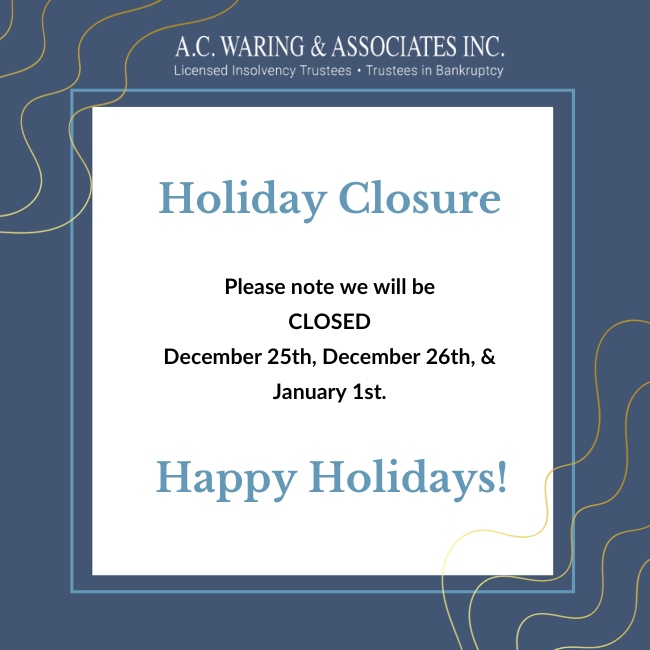The burden of debt can become crushing. It can be so difficult to relax and enjoy life, even for a moment, when your mind is constantly focused on how much you owe and how much it limits your options. It can sometimes feel like you will never manage to crawl out of the financial pit, which only adds to the anxiety. The simplest solution to this issue is to avoid debt in the first place. But even if you’re already bogged down by debt, it may not be too late to get back on track. The first step to living debt-free is to understand how debt actually works and how it might turn into an debt cycle.
The Difference Between Debt & a Debt Cycle
Debt does not always become cyclical. There is, of course, “good debt” like a mortgage, which offers a good return-on-investment by giving you somewhere to live, builds equity, and typically features relatively low interest rates. But even with “bad debt” like unpaid credit cards and other unpaid bills, it may be possible to buckle down and pay the balances owed before they become an ongoing, interest-growing problem. But a debt cycle goes a little bit deeper than just owing money. A debt cycle starts to snowball out of control and, rather than shrinking, the amount you owe keeps growing over time.
How Debt Becomes a Cycle
There are a few key ingredients that can develop into the perfect storm we call a debt cycle. In some cases, the cycle stems from all of the elements below being present all at once. Other times, one or two of these factors are enough to put you in serious financial trouble. In any case, recognizing the risk factors can help you make sounder financial decisions and avoid expanding an ongoing owing problem. These factors include:
1. High Interest Rates
High interest loans are the number-one cause of self-contained debt cycles. Consumers might borrow a reasonably small amount without necessarily considering the compounding interest. As time goes on, the interest continues to stack up, adding to the debt. Eventually, the consumer is paying a fortune in interest without even making a dent in the principle. What started as a reasonably small loan may have ballooned into something much more onerous. So what counts as a high interest rate? A number like 9% sounds relatively low but adds up very quickly. Anything over 6% is considered a high interest rate.
2. Minimum Payments
Minimum payments are just that; the bare minimum that you are required to pay. But if you can, and ideally should, pay more. Of course, with a low enough interest rate, your minimum payment might still be enough to chip away at your principal. But if your interest rate is high, it won’t be long before you are just paying on the interest without even touching the principal amount owed. The more debt you can pay-off per payment, the less you will have to pay in interest. So, when considering a loan (and this includes credit cards), especially one with a high interest rate, be sure to figure out ahead of time how much you might be able to pay beyond a minimum payment amount.
3. Principal Beyond Your Means
When it comes to financial matters, desperation breeds disaster. People often rely on credit cards and other high-interest borrowing options in emergency situations. This becomes a problem when the amount the consumer borrows is simply far more than they can reasonably pay back considering their income, living expenses, or other factors. Borrowing money in these situations is like using a leach as a bandage. Yes, you’ve managed to prevent getting blood stains on your clothes, but you are still losing blood.
Never borrow money without knowing when or how you’ll pay it back. Of course, no one really knows what the future has in store, and it’s impossible to know exactly what your financial situation will look like 20 years into a mortgage. But for short-term loans and credit cards, it’s best not to spend money ahead of your ability to repay it.
How to Escape the Debt Cycle
A debt cycle can feel completely overwhelming. The good news is that there is a way out of the debt cycle. The first step is to take a deep breath, let go of any shame or fear of judgement associated with your debt, and get some help.
We recommend you speak to a professional about your options. Speak to a Licensed Insolvency Trustee who is professionally appointed and experienced. They can discuss debt counselling, possible debt restructuring, consumer proposals, bankruptcy or other options in order to provide you with specific solutions to meet your obligations.
No matter what your situation, we believe the next step should always be to seek advice from a professional. A. C. Waring & Associates Inc. offers free consultations to discuss your options and provide professional advice.
We encourage you to contact us at 780-424-9944 or toll-free at 1-800-463-3328 for your free consultation. You do not need a referral. You can call or just drop-in to First Edmonton Place, Suite 410, 10665 Jasper Ave. (Corner of Corona Station and Tim Horton’s on Jasper Ave).





